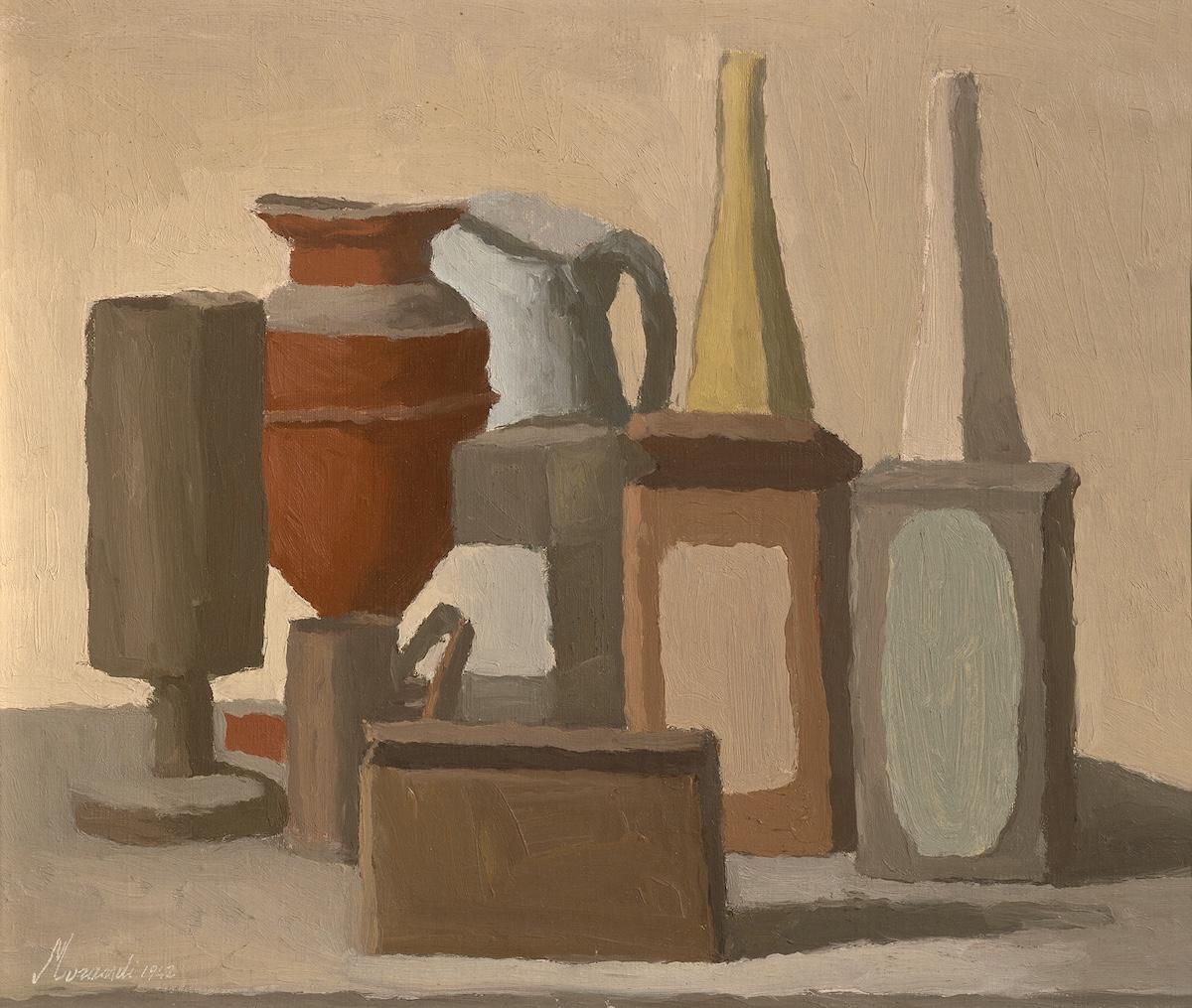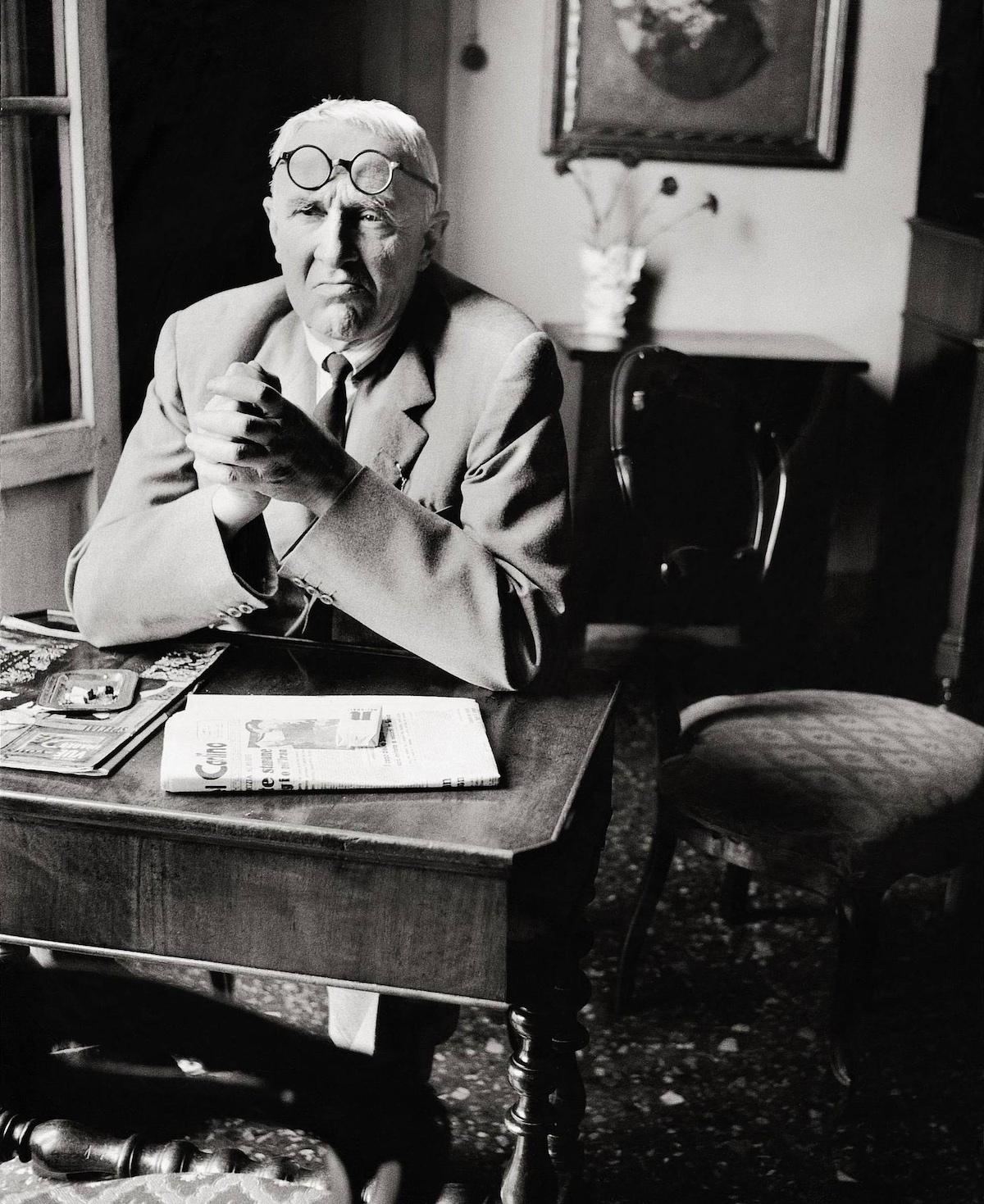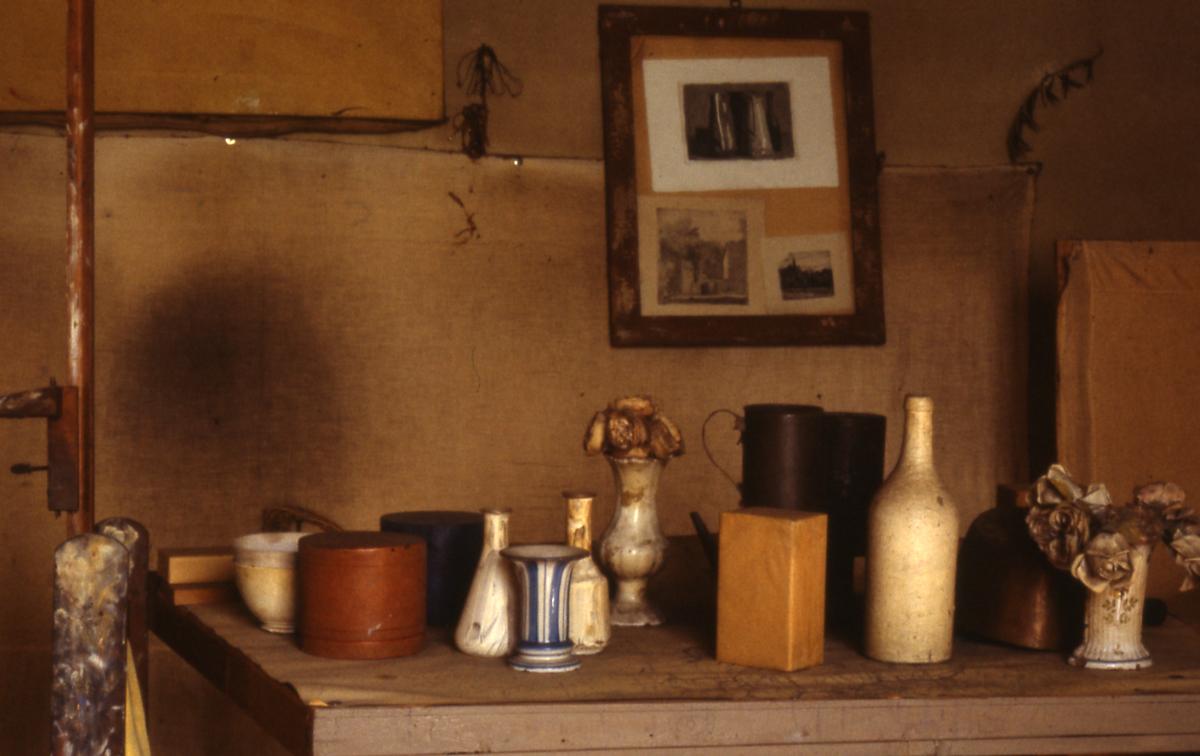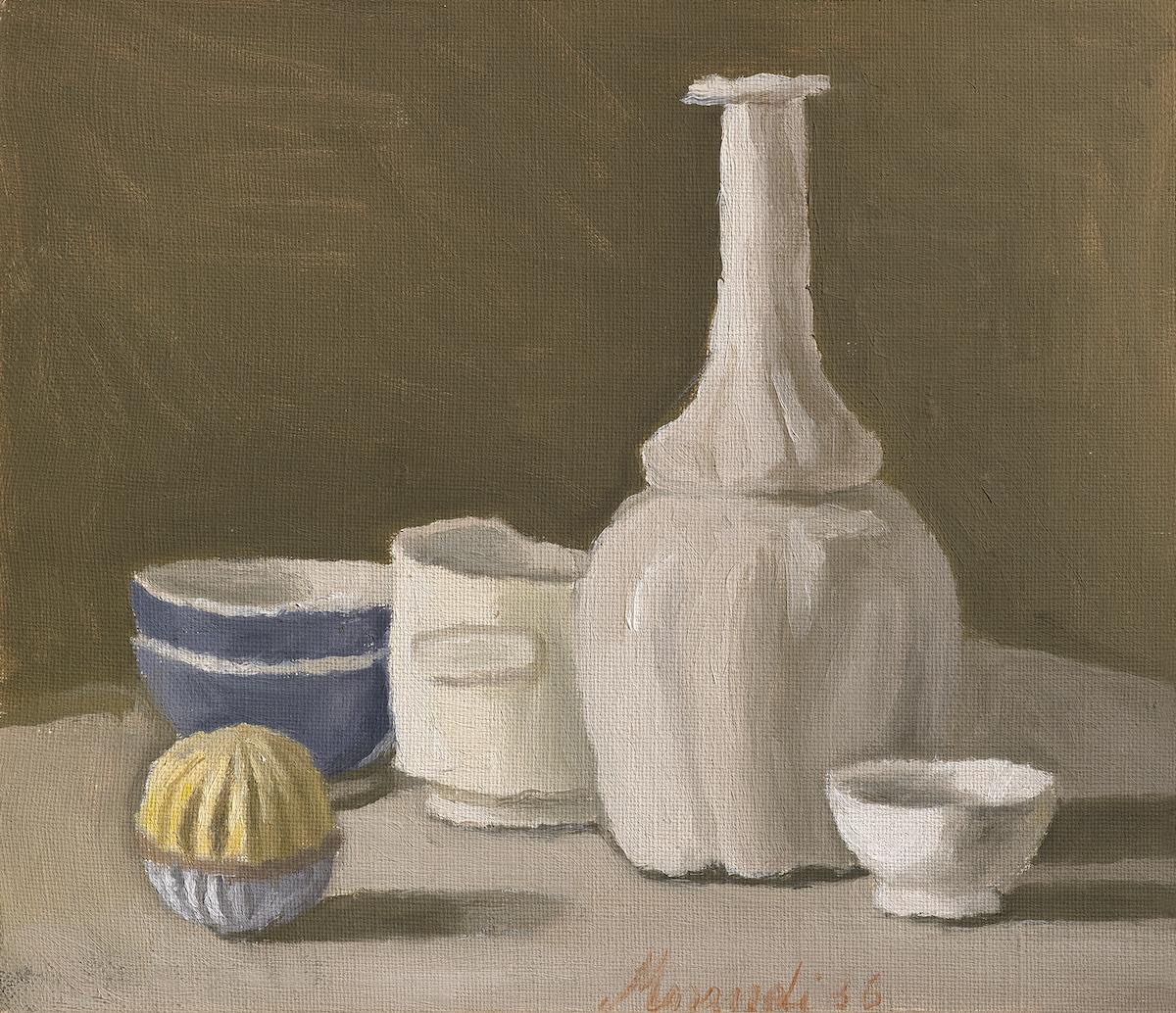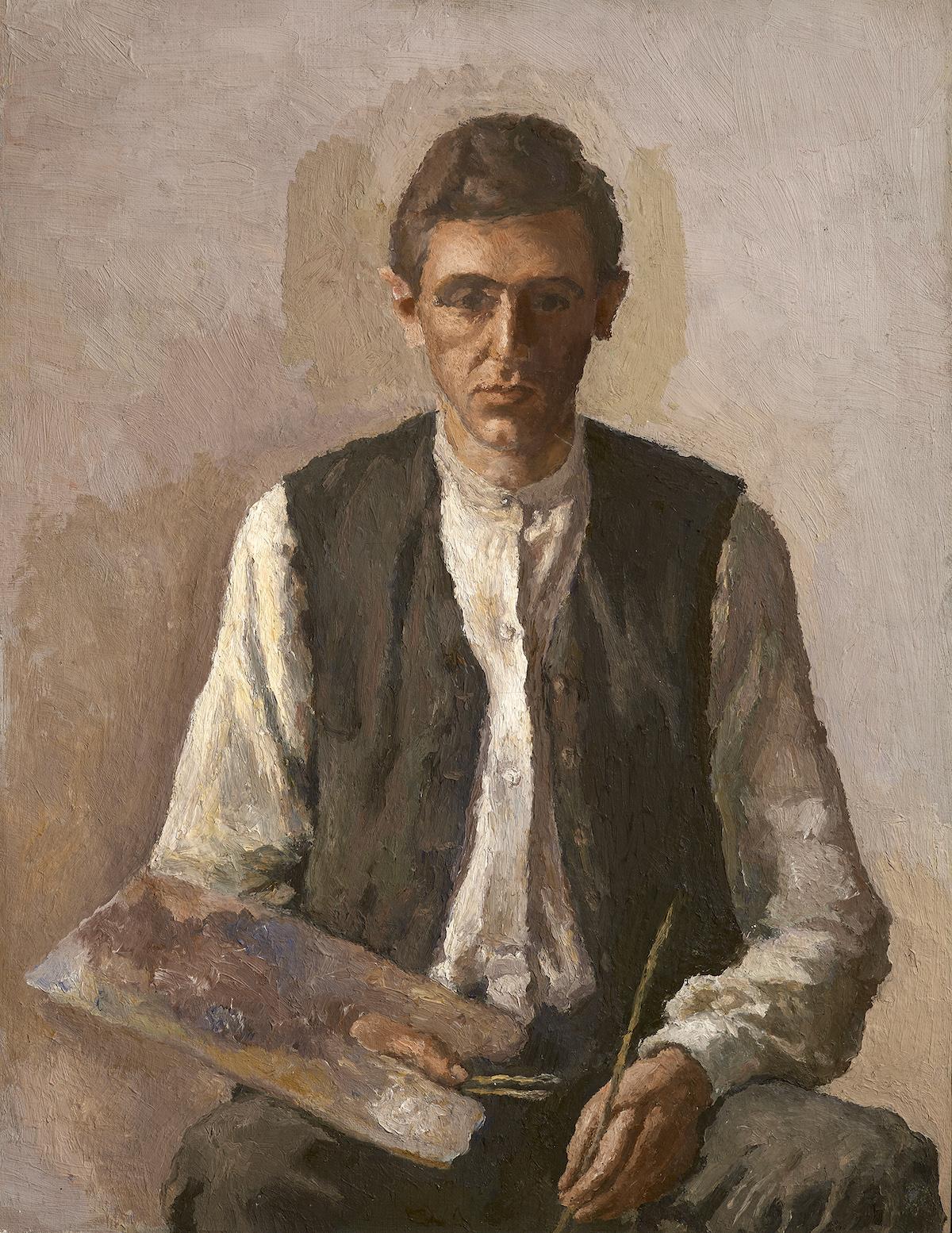Giorgio Morandi was born in Bologna, Italy in 1890. He studied at the Accademia di Belle Arti in Bologna. During his years as a student, he traveled to the VIII Venice Biennale where he studied and revered Cezanne’s paintings. He again visited Venice at the IX Biennale, admiring many Renoirs. That same year, in 1910, he traveled to Florence. At the Uffizi he was deeply impressed by Masaccio, Giotto, and Paolo Uccello. He painted his first landscape a year later, which was described by a young critic, Cesare Brandi, as “a vast sky of solitude without refuge.” Brandi considered Morandi to be the most important painter of the twentieth century. During this period, Morandi also began making etchings.
Following the death of his father in 1910, Giorgio and his family moved to a house on via Fondazza in Bologna. With his mother and three unmarried sisters in tow, they moved to an apartment nearby, and Morandi used the via Fondazza house as his studio. In 1930, he was appointed Professor of Etching at the Bologna Academy of Fine Arts where he went to school. He later became the Chair of Printmaking, a position he held until 1956. In 1962, Morandi died at his home in Bologna where he had lived and worked most of his life, just shy of his 74th birthday.




